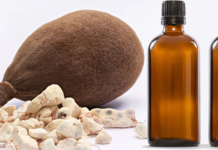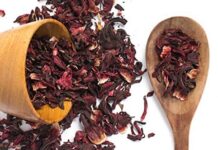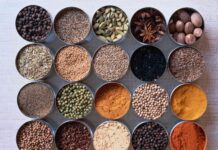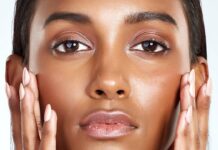 The aloe vera plant is about one or two feet tall with prickly and bitter leaves, which act as a defense to keep animals and insects from feeding on the plant. The leaves hold a gooey translucent gel, also extremely bitter, and known all over the world for its unbelievable healing properties. This translucent gel is made up of around 96% water, some organic and inorganic compounds, a type of protein which contains 18 of the 20 amino acids found in the body and lastly, Vitamin A, B, C and E. Another part of the aloe vera plant which is used is the ‘sap’, a yellow-coloured liquid stuck to the skin of the plant from the inside. When dried and purified, the powdered aloe is often used as a laxative, though its effectiveness is questionable. One of the most crucial elements found in aloe vera gel is a complex carbohydrate known as acemannan. It allows nutrients to reach the cells, nourish them and at the same time relieve them of toxins. Ayurveda, Chinese herbal medicine and British herbal medicine have all advocated aloe vera as a healer, when applied or consumed orally.
The aloe vera plant is about one or two feet tall with prickly and bitter leaves, which act as a defense to keep animals and insects from feeding on the plant. The leaves hold a gooey translucent gel, also extremely bitter, and known all over the world for its unbelievable healing properties. This translucent gel is made up of around 96% water, some organic and inorganic compounds, a type of protein which contains 18 of the 20 amino acids found in the body and lastly, Vitamin A, B, C and E. Another part of the aloe vera plant which is used is the ‘sap’, a yellow-coloured liquid stuck to the skin of the plant from the inside. When dried and purified, the powdered aloe is often used as a laxative, though its effectiveness is questionable. One of the most crucial elements found in aloe vera gel is a complex carbohydrate known as acemannan. It allows nutrients to reach the cells, nourish them and at the same time relieve them of toxins. Ayurveda, Chinese herbal medicine and British herbal medicine have all advocated aloe vera as a healer, when applied or consumed orally.
 Weight Loss
Weight Loss
Aloe vera is used in a wide range of health products, like diet supplements and juices. It’s rich in anti-oxidants which means it helps cut out free radicals in the body and boosts immunity. It’s also a good source of proteins, so it helps muscle development and gives you copious amounts of energy. There are countless studies that prove how effective aloe vera is for weight-loss, but it should be consumed regularly and over a long period of time for it to really work. How to drink aloe vera juice: The natural taste of aloe vera is so bitter that you wouldn’t think of consuming it as is. Take the gel, dice it into small pieces and blend. Now mix a bit of this with some other fruit or vegetable juice that’s preferably sweet. You can also use the leaves of aloe vera, blend them, strain and drink. If you find it too bitter then mix it up with honey and drink. You can also add some lemon to this mix.
 Hair loss
Hair loss
Aloe vera contains something called proteolytic enzymes which repairs dead skin cells on the scalp. It also acts as a great conditioner and leaves your hair all smooth and shiny. It promotes hair growth, prevents itching on the scalp, reduces dandruff and conditions your hair. Keratin, the primary protein of hair, consists of amino acids, oxygen, carbon, and small amounts of hydrogen, nitrogen, and sulfur. Aloe vera has a chemical make up similar to that of keratin and it rejuvenates the hair with its own nutrients, giving it more elasticity and preventing breakage.
Moisturizer
For a moisturizer that doesn’t leave a greasy film on your face, look no further than Aloe Vera. It softens the skin without clogging pores. Aloe Vera gel can also be used as an aftershave treatment as it will both hydrate the skin and help heal razor burn and small nicks. Research has shown that Aloe Vera extract is an effective natural substance for improving skin hydration, making it a useful ingredient in cosmetic formulations and as a treatment for dry skin.
Accelerates Wound Healing
Aloe is most commonly used as a topical treatment for cuts, burns and other wounds – and with good reason. Aloe Vera may reduce the healing time of first or second degree burns by almost nine days, when compared to the control groups.These incredible results may be explained by the fact that Aloe speeds up skin cell reproduction by as much as eight times and penetrates the epidermis (the outer layer of skin) four times faster than water.
Fights Aging
As it is rich in vitamins C and E and beta carotene (a pre-cursor to vitamin A), aloe may have some anti-aging qualities. Its anti-inflammatory and antimicrobial properties, and its ability to lighten blemishes, also help it take years off your face. Furthermore, Aloe Vera can be taken in supplement form to fight aging, with some research finding that it increases the body’s production of collagen and improves skin elasticity in just 90 days.
Reduces Acne and Infection
Those with acne may want to try Aloe Vera’s gentle cleansing and antimicrobial properties to treat their pimples. This healing gel works on several levels. Its antibacterial, antiseptic and anti-inflammatory properties protect the skin from bacteria and other pathogens which lead to infection and inflammation. It contains substances such as gibberellins and polysaccharides that stimulate the growth of new cells, while glycoproteins reduce inflammation and redness. As an astringent, Aloe Vera reduces pore size, which helps keep out excess sebum, dirt, and microbes. In Ayurvedic medicine, Aloe is also used to treat psoriasis and eczema.
Prevents Dandruff
Dandruff has a number of causes, including dry skin, fungal infections, and irritated, oily skin. Aloe Vera helps with all these conditions. Its antimicrobial and anti-inflammatory properties fight fungus, while the gel also hydrates and balances oiliness.
Nourishes and Conditions the Hair and Scalp
Just as it moisturizes the skin, Aloe Vera softens and conditions the hair. Regular use helps restore shine and vitality .Unlike conventional, chemical-based moisturizing hair products, Aloe Vera doesn’t leave behind a nasty residue and greasy build-up.
By: Umaru Maryam Hadejia














